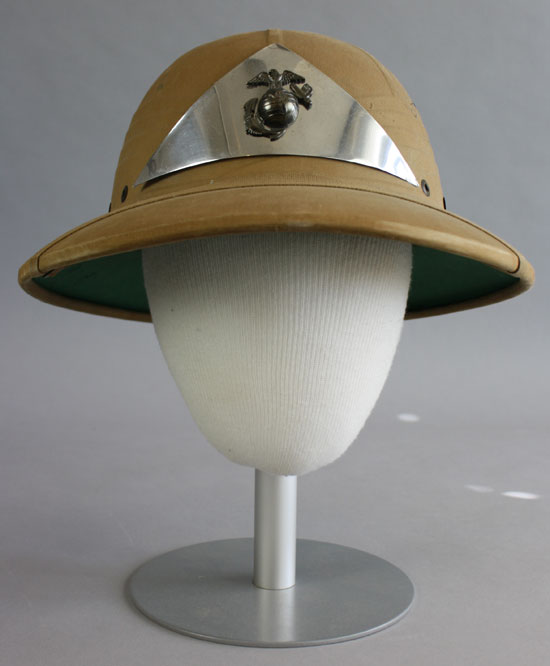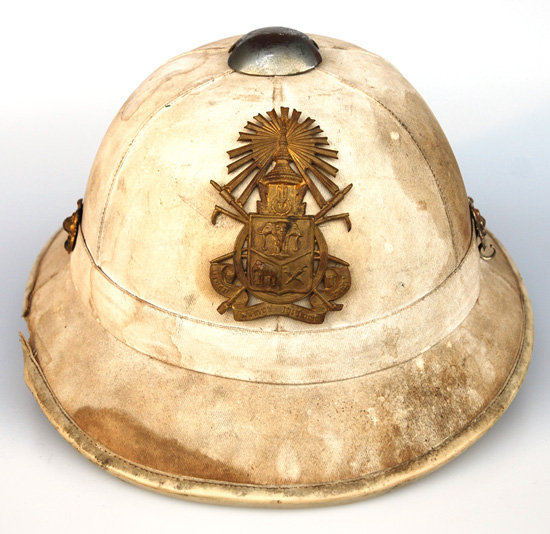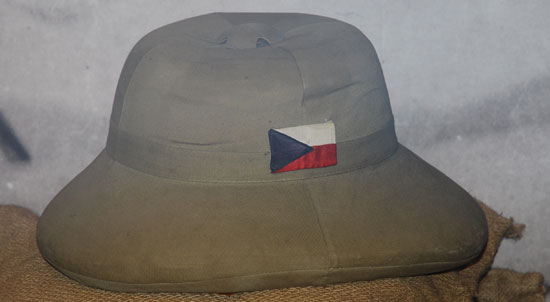 Our friends at the National Museum of the Marine Corps recently shared some photos of the above helmet. It is truly something we’ve never seen before. It was suggested that the unique triangular metal plate may have been worn to identify the owner as an “instructor” but more information isn’t available. Continue reading
Our friends at the National Museum of the Marine Corps recently shared some photos of the above helmet. It is truly something we’ve never seen before. It was suggested that the unique triangular metal plate may have been worn to identify the owner as an “instructor” but more information isn’t available. Continue reading
Category Archives: Museum
Sun Helmets of Thailand
Sun helmets were used by nearly all the colonial powers in East Asia an, but three local nations also utilized a wide range of sun/pith helmets. These include of course Japan, which during the Second War World used a variety of patterns of helmets; and Vietnam, which adopted a variation of French Model 1931 that was produced locally and made this pattern its own.
The other power that wore sun helmets is actually the nation that used sun helmets the longest in the region, and which ironically is overlooked when considered in the grand history of this form of headdress. This of course is Thailand, formerly known as Siam. Continue reading
Sun Helmets in the London Guards Museum
The Guards Museum in London chronicles the story of the five regiments of Foot Guards (the Grenadier Guards, Coldstream Guards, Scots Guards, Irish Guards, and Welsh Guards). Its collection includes many fine examples of military sun helmets. Continue reading
Czech Sun Helmets
It is a strange thing to consider that the landlocked Central European nation of Czechoslovakia (today the Czech Republic and Slovak Republic) would ever have a need for sun helmets. While the traditional Czech police helmets used in Prague and other cities were made of a pressed fiber material, and even resemble sun helmets, protection from the sun was not the primary purpose.
And despite this fact, there are examples of Czech used sun helmets – notably those used by the Free Czech Forces that fought with the Allies in North Africa and served in garrison duty roles in Palestine. Photos suggest that the Khaki Sola Pith pattern was the most commonly used pattern – often with the tri-color Czech flag attached to the left side. Continue reading



